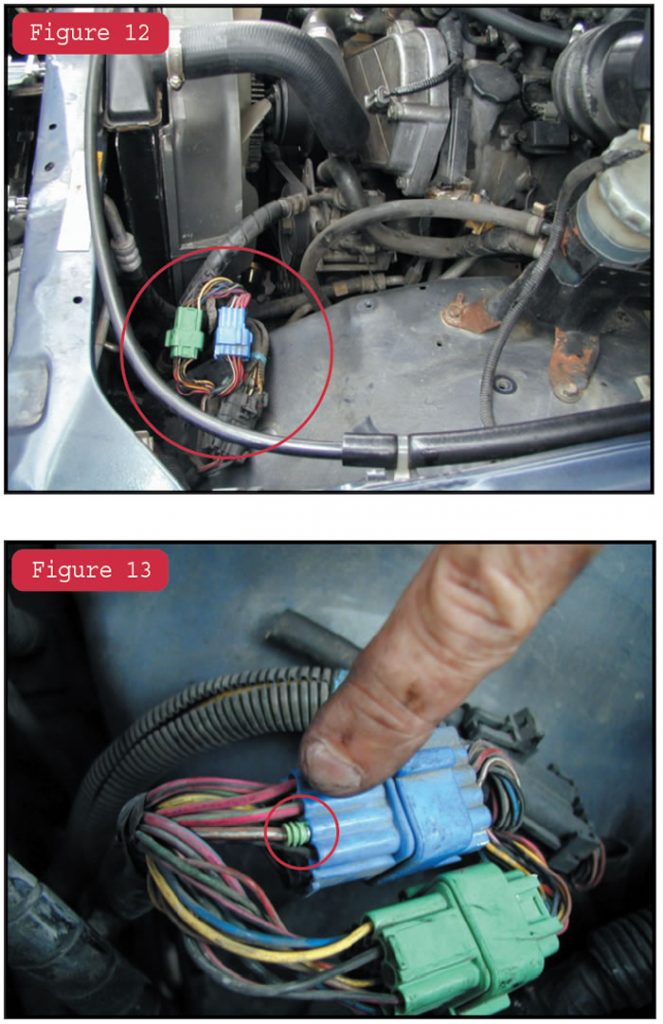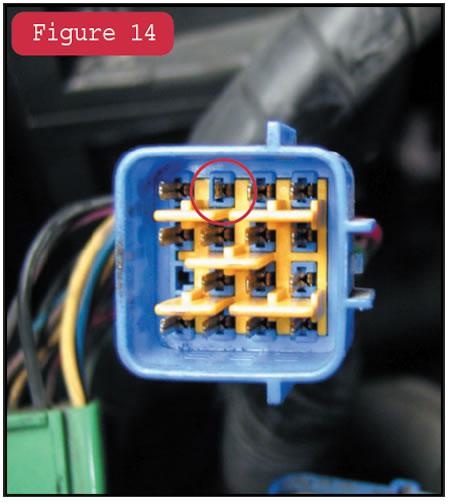
Technically Speaking
- Author: Wayne Colonna, Technical Editor
One of the many automotive animals that technicians have to wrestle with is finding the definitions for the ever-increasing number of diagnostic codes. And then, of course, their definitions are being represented by a seemingly endless list of acronyms associated with that code. TCC, VSS and TPS are just a few recognizable acronyms in our industry today.
The other day I had a laugh about this when doing a tech call. This technician had a common complaint of a TCC-shuttle problem with a 1998 5.7-liter Cummins diesel Dodge truck. I was explaining to him how his APPS sent a signal to his ECM, which sent a signal to the PCM. If the signal from the ECM was erratic to the PCM, it could cause the PCM to make the TCC shuttle.
To which he said: “Are you the Abbott and Costello of transmissions? You know, who’s on first and nobody is on second routine. Could you repeat that again for me please?”
After having fun with that, I thought to myself that “Code Definitions, Deciphering Acronyms” would definitely make a great title for a new manual. One of the acronyms that would absolutely have to be in that manual is GM’s MMT. This acronym represents “methylcyclopentadierlyl manganese tricarbonyl,” which is an octane-enhancing additive in fuels that could reduce spark-plug life, affecting the performance of the emission-control system to the level where the MIL could illuminate. Without question, it is easier to say to the customer, “Your vehicle has suffered from continued use of MMT fuels,” don’t you think?
If acronyms and code definitions were not enough to keep up with, sometimes a code could change in meaning. For example, 1990-93 transmission codes for Isuzu and Rodeo trucks are not all the same when compared with the 1994-95 model years (see Figures 1 through 5). A code 33 in 1990-93 models means that the EPC-solenoid circuit is shorted to power, but for 1994-95 it means that the TCC-solenoid circuit is either open or shorted to power. This can be a real problem for a technician working on a 1995 vehicle and using a 1990-93 code list.
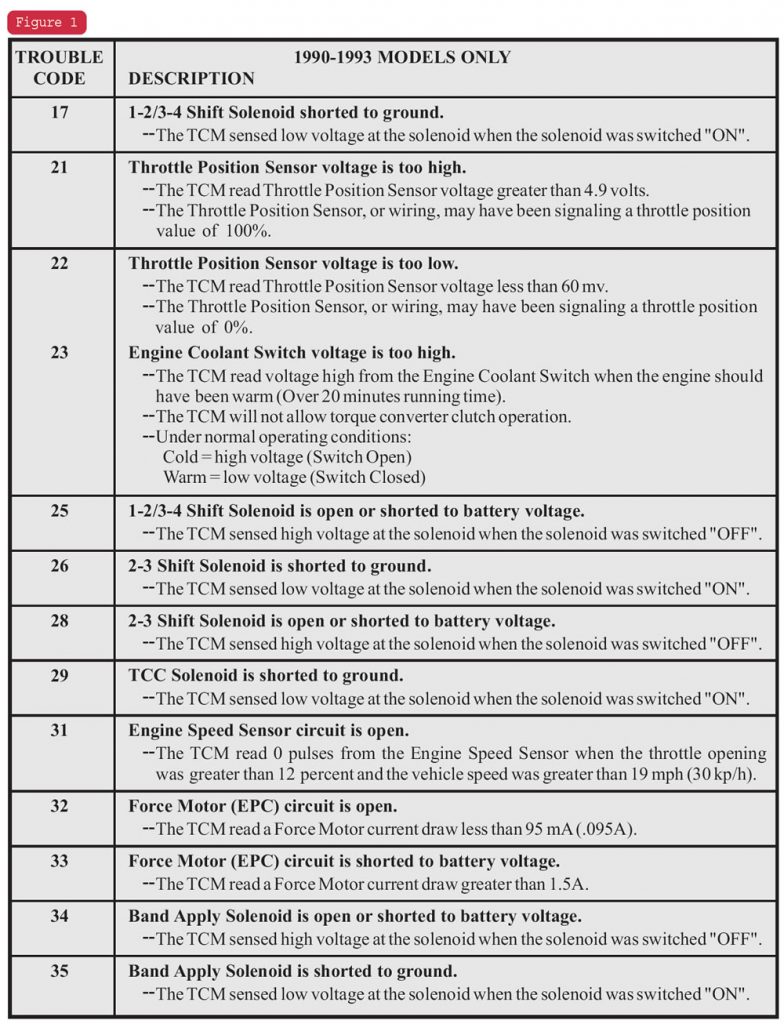
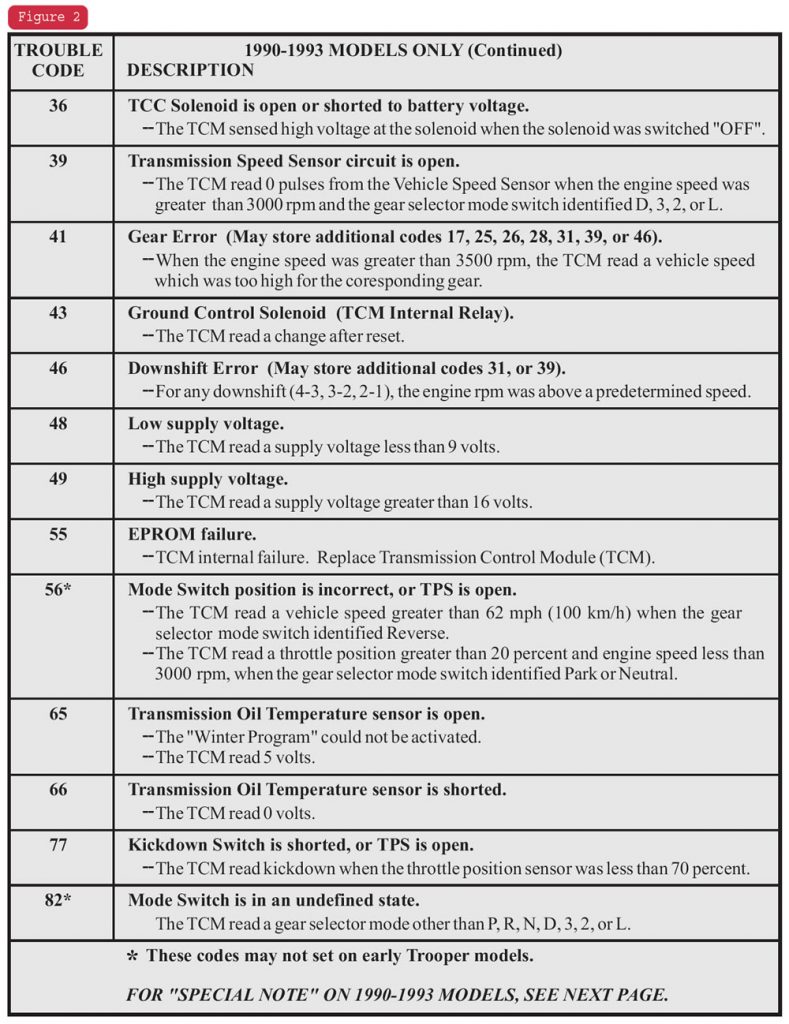
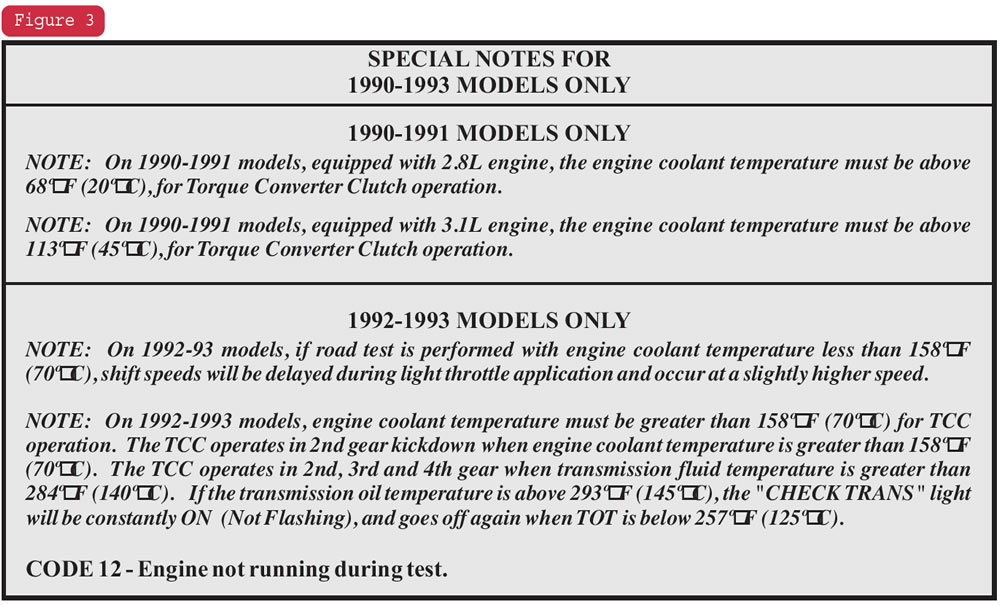
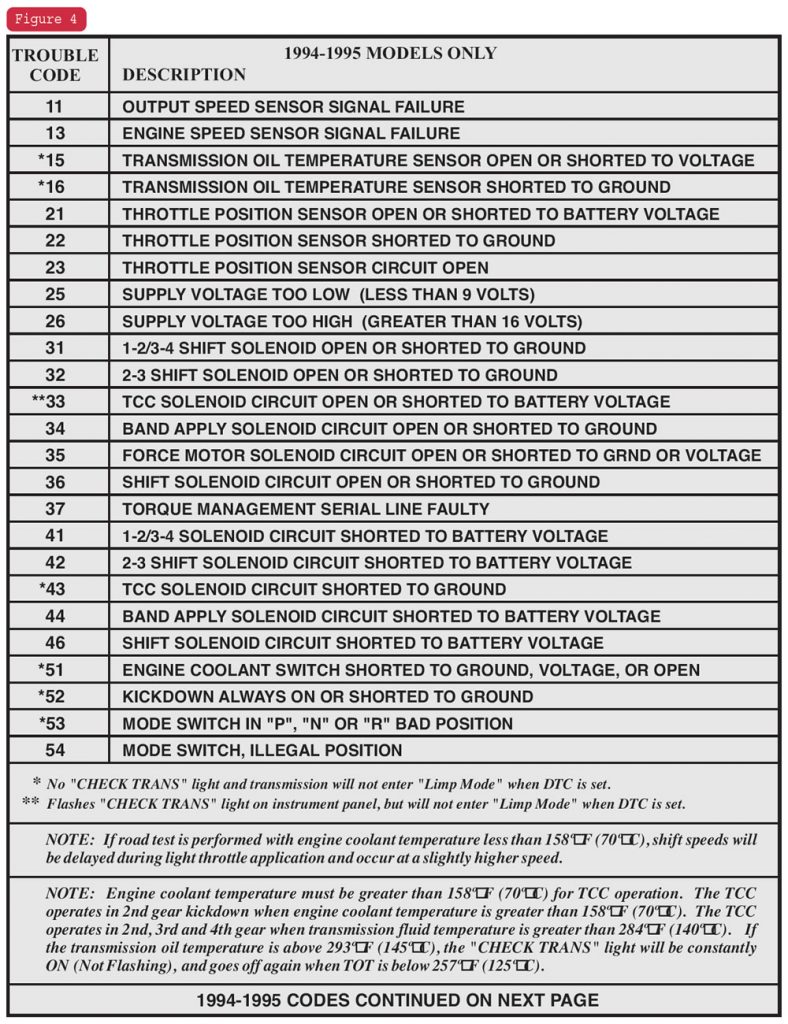
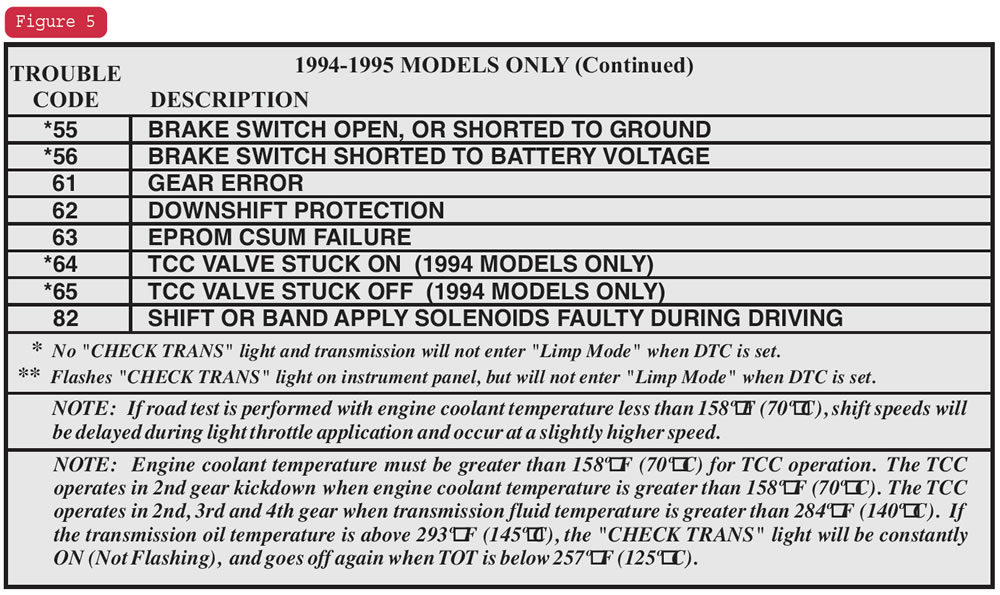
Of course, with the introduction of OBD-II in 1996, the code list underwent another radical change, adding a whole new twist to the code-list scenario (see Figures 6 and 7). For example, a 1990-93 Isuzu/Rodeo has code 25 designated to mean that the 1-2/3-4 solenoid circuit is open or shorted to battery voltage. In 1994 and 1995 models, with the expanded list, code 41 means the 1-2/3-4 solenoid is open or shorted to battery voltage. Code 25 was changed to mean that the supply voltage is too low (less than 9 volts). Now in 1996 and later vehicles, codes and descriptions changed. P0753 means shift solenoid A electrical fault.
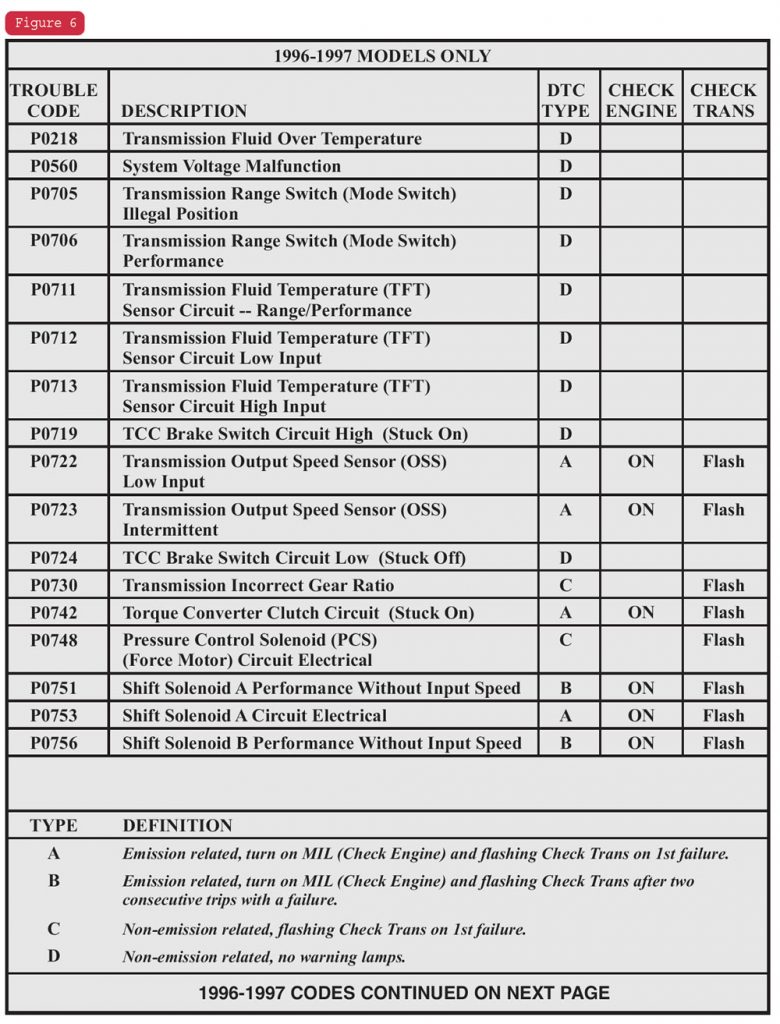
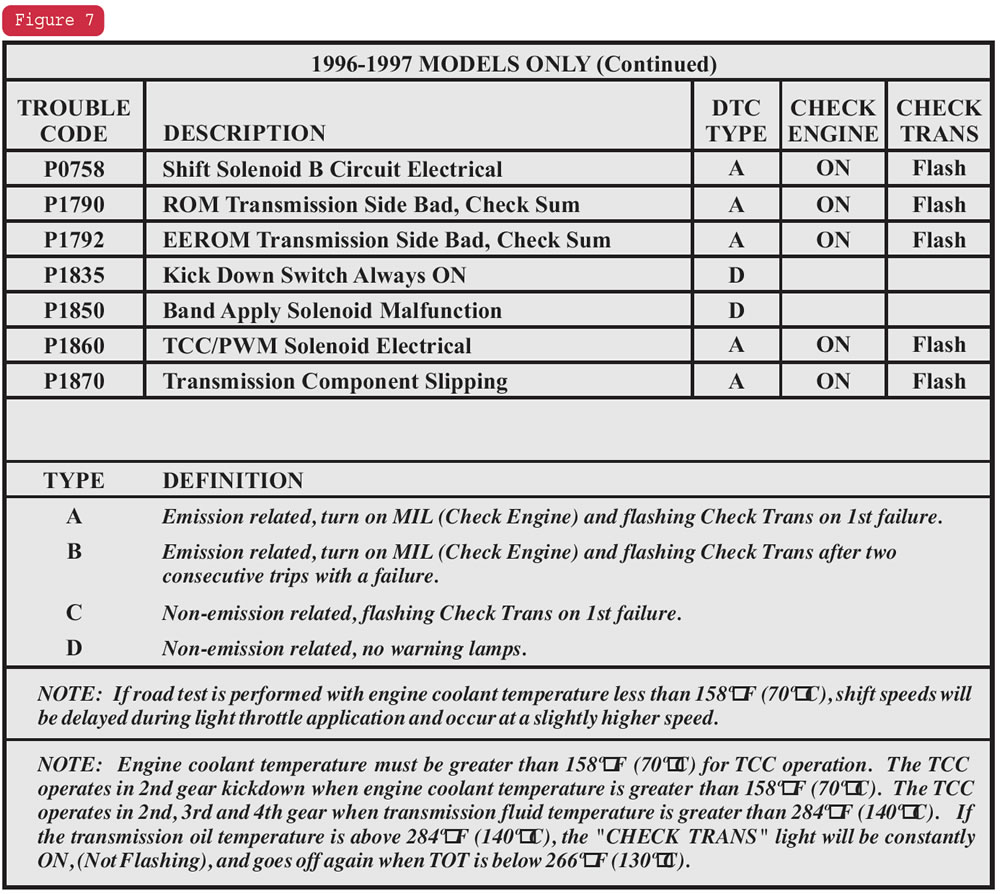
P0758 means shift solenoid B electrical fault. There are only two shift solenoids in a 4L30 E: the 1-2/3-4 and the 2-3. Would anyone like to hazard a guess as to which one is shift solenoid A and which is solenoid B? The code list doesn’t help much here. Code P0753 for SSA represents the 1-2/3-4 solenoid, and P0758 for SSB represents the 2-3 shift solenoid.
To find the definitions to acronyms and the proper code designation and description can be a time-consuming case of hide and seek. One manual that’s helpful to have in your shop and well worth every penny you spend on it is “The Automotive Technicians Complete Guide to Diagnostic Trouble Codes,” The Professional Service Trade Edition by Motor. This manual will be sure to help reduce the time in finding codes and their definitions, taking the “hide” out of “seek” for you.
Once you know that P0753 for SSA means an electrical problem with the 1-2/3-4 solenoid on a 1996 or later Isuzu, the actual check is quite simple. But where the problem may be is another hide-and-seek game.
Figure 8 shows the PCM being forward of the shifter – a nice, easy place to get to and do some testing. A wiring diagram in Figure 9 reveals that 31 is the red connector, 32 is the white connector and 33 is the blue connector. Terminal E14 is the power supply to the shift and band-apply solenoids. Terminal F14 is the ground wire the PCM uses to operate the 1-2/3-4 solenoid. Both of these terminals are in the J3 connector. Rows E and F run parallel with each other, with 16 available terminal locations in each row. A close-up of the 33 connector in Figure 10 points out where you can find the letters and numbers on the connector to locate the proper terminals.
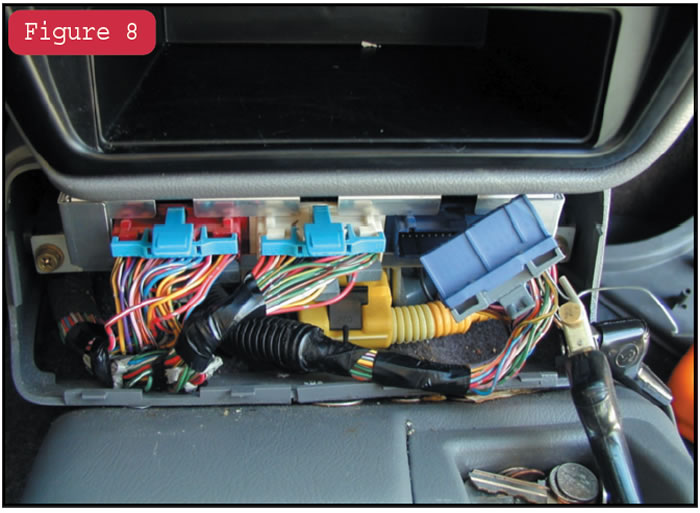
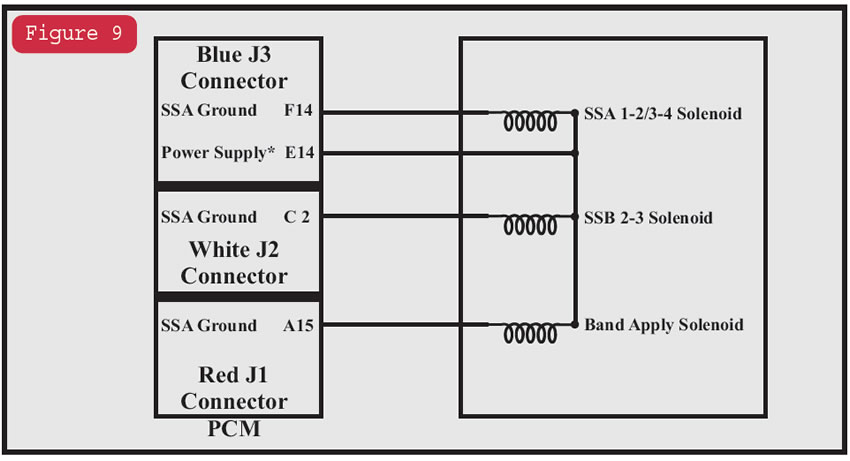
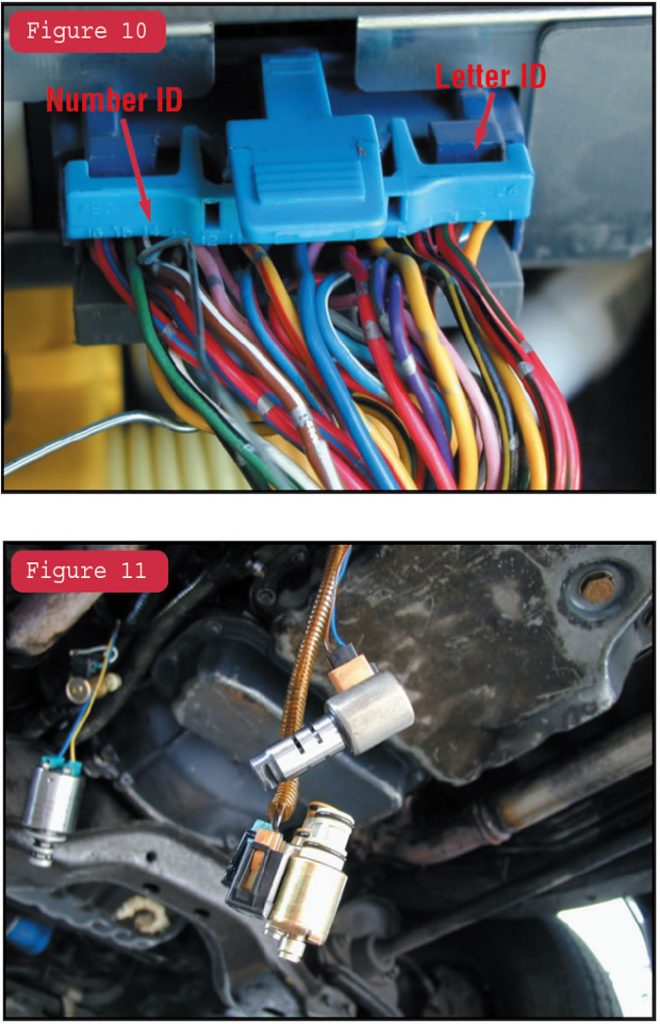
With the J3 connector unplugged, I back-probed the E14 and F14 terminals to get a resistance check on the 1-2/3-4 solenoid circuit. I had an open circuit. As a quick test to eliminate an internal problem with the transmission wiring harness, I unplugged the external harness connector by the transmission and plugged it into a known good harness (see Figure 11). I still had an open circuit. With this discovery I knew my open-circuit problem was external to the transmission.
Since the E14 wire is the power-supply wire to the solenoids, I decided to plug the J3 connector back into the PCM and turn the ignition on. I then checked for that power down by the transmission, and it wasn’t there. Bingo! My open circuit is in the power-supply wire to the solenoids, which is a brown wire with a white tracer.
I then started to trace the harness and found that it traveled under the air-intake duct and filter-box assembly. When I removed it, I found a gang of connectors (see Figure 12). I began looking for the brown wire with a white tracer, and in no time at all I saw on the backside of the blue connector the problem (see Figure 13): The wire actually was pulled out of the connector. Figure 14 shows how far back the pin was inside the connector, preventing contact with the mating connector. I pulled the terminal back into place with a pair of needle-nose pliers and plugged the connectors together, restoring the electrical system to proper working order. Later I learned that this vehicle first had been to a body shop for repairs. It then had found its way to another transmission shop. So who knows how this wire was pulled or pushed out of its place. However it happened, it was a case of hide and seek.
